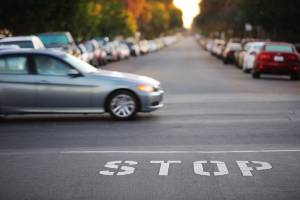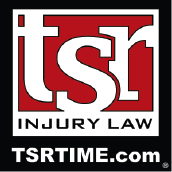Study Shows Stop Lines Not as Effective as Intended for Driver Safety
 Traffic safety officials take certain precautions to keep drivers and pedestrians safe. Often, those measures are taken by analyzing driving patterns and traffic density.
Traffic safety officials take certain precautions to keep drivers and pedestrians safe. Often, those measures are taken by analyzing driving patterns and traffic density.
One of the measures taken by traffic safety officials in Minnesota is the use of white safety lines called “stop lines” to designate the spot where drivers are meant to stop at an intersection. However, a recent study shows these lines were ineffective in keeping driver’s safe by getting them to stop sooner.
What Are Stop Lines?
Stop lines, also called stop bars, are white lines drawn on the road at intersections where there is a stop sign or traffic light. They are meant to show drivers where they should come to a full stop at the intersection.
These lines are often put in because of vision obstructions for other drivers on the road. Say the stop sign at a particular intersection is right at the intersection, this could potentially be troublesome for drivers who are making a turn that crosses the path of the vehicle stopped at the intersection – if the car at the stop sign is pulled all the way up to the sign, the car making the turn could scrape the front of the other car by not making a wide enough turn.
What Does the Study Show?
The study, which was conducted by the Minnesota Local Road Research Board, was carried out for over 14 years observing the metropolitan intersections where the stop lines are painted. The study found that the lines were ineffective at getting drivers to stop where they are meant to stop.
The Star Tribune reports that the study’s lead investigator, John Hourdos of the University of Minnesota, says that the stop lines are effective in slowing drivers down.
Hourdos tells the Tribune “stop lines do affect the driver’s approach behavior, so if they are used, they need to be used appropriately. Since they are not globally beneficial, they can be used on locations where vehicles are approaching at high speeds to slow down the unavoidable roll-and-stoppers.”
What was the Purpose of the Study?
Stop lines, or bars, are used almost everywhere in the United States. And although drivers are legally required to stop at stop signs and traffic lights, there is no law that says they must stop on or before the stop lines. That is why researchers wanted to review the effectiveness of the stop bars in reducing crashes and promoting driver safety.
Have Questions? Call Us Today
If you have been involved in a crash with a driver who did not stop at the designated stop lines of an intersection, you may be wondering what legal options are available to you.
The Bloomington-based car accident attorneys at TSR Injury Law are prepared to review your claim and see if you are eligible for compensation.
We do not charge you anything up front and only get paid if you do.
Call today to schedule a free consultation at (612) TSR-TIME



